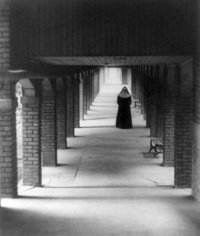
Like many people, baseball has always been a big part of my life. The first memories I have about baseball include my first mitt, bound in rubber bands and soaked in saddle soap, stored under my bed to work in the leather; trying to catch those first thrown baseballs and dropping at least 20 before one miraculously fell into my glove; my first World Series (1968 -- Detroit beat St. Louis). Watching Bob Gibson scowl reminded me of our fourth grade physical education teacher, Mr. Cannon, who believed in jumping jacks and medicine balls and didn't like "smart alecs" like myself. I'll always fondly recall my very first Little League uniform a t-shirt that shrunk to half its size after the first washing and gradually got smaller with every subsequent trip through the laundry and a cap that was three sizes too large. I played Little League in my home town of Old Greenwich, Connecticut, and later when we moved to Southern California. I was a classic example of good glove, no bat, and was frustrated playing the game most of my life. I was an excellent fielder. I had a great arm and made quite a few spectacular catches. But, I was clueless at the plate. I would get up there and my legs would start shaking, and I'd either freeze and take three strikes or swing with little chance of hitting anything but air. I'm still ashamed to admit that the last year my father coached me in Little League (I think it must have been 1970) I failed to get even a single base hit all season. My nickname was changed forever that day -- from Steady Ed to Eddie Oh-fer.
In those years, living in Connecticut, we were obviously Yankee fans. No one I knew rooted for the Mets, except one strange little girl in my fourth grade home room. Being a Mets fan was like being a Jets fan. It just wasn't done.
But, much to everyone's surprise, the Mets won it all in 1969. We moved to the Los Angeles area that summer, and watched the Amazin's from NYC shock the Baltimore Orioles on our new color TV with a 16 inch screen, which at that time was considered enormous. The five-game dismantling of the mighty birds of the American League was fun to watch, although I still don't believe it happened. Baltimore took game one easily, beating Tom Seaver, the Mets' ace. Jerry Koosman shut down the big Baltimore bats in game two, and I thought to myself, well, it least it won't be a sweep. I never imagined that the rag-tag crew from Shea would win the next three games. Met pitchers Gary Gentry and a very young baby-faced Nolan Ryan combined for a 5-0 shutout in game three, Seaver pitched a complete game in contest number four, and Koosman went all the way in five, winning 5-3, after trailing 3-0 early in the game. Previously unknown guys with names like Swoboda, Agee, Al Weis, and Don Clendenon beat the dominators of the American League, handcuffing the greatest hitters of the time, household names and Hall-of-Famers like Frank Robinson, Boog Powell and Paul Blair. Brooks Robinson made the plays at third, the staff of Palmer, Cuellar and McNally pitched spectacularly all season, but the end result was that the Orioles lost to the better team during 1.5 weeks in October, 1969.
It was a classic example of the simple fact that the most talent doesn't always prevail. The Orioles tried too hard, pressed too much and gave the Mets a chance to walk through the door. When it was all over, I learned a valuable lesson. There is no such thing as a sure thing. The Jets with Broadway Joe would prove that again to me just three short months later, when they embarrassed another sports powerhouse of the period, the Baltimore Colts in the Super Bowl. I don't know if it was a full moon, or if mercury was in retrograde, but those have to be two of the biggest upsets in professional sports, both played by two teams from the same city, with Baltimore playing the heavy favorite in each, only to screw the pooch. Another fun fact is that the NY pro basketball Nets won the ABA that same year.
By late 1970, we were comfortable in our new West Coast lifestyles. We were now Los Angeles Dodger fans. But, like with the Yankees in 1968 and 1969, the Dodgers were still far away from getting anywhere near the Fall Classic. The transplanted Bums had performed well after moving from Ebetts Field to Chavez Ravine, winning the whole thing in 1959, 1963, and 1965, but hadn't done much since.
Baseball was fun for me to watch, even if I couldn't hit. Some of the kids I played with and against went on to become stars at the high school and college levels, but none of them made it to the big show. It's one of the toughest things an athlete can ever achieve. People don't realize how extremely difficult it really is to play in even one game at the MLB level.
Life in L.A. was good for a rambunctious 12-year old. But, things were about to change. A person who would radically change the way I thought about a lot of things was about to enter my life. She was a nun. A tough nun. And her name was Sister Sandy Koufax.
Little did I know that the you-know-what was poised to hit the fan.
Next: Part 2: Sister Stopper





